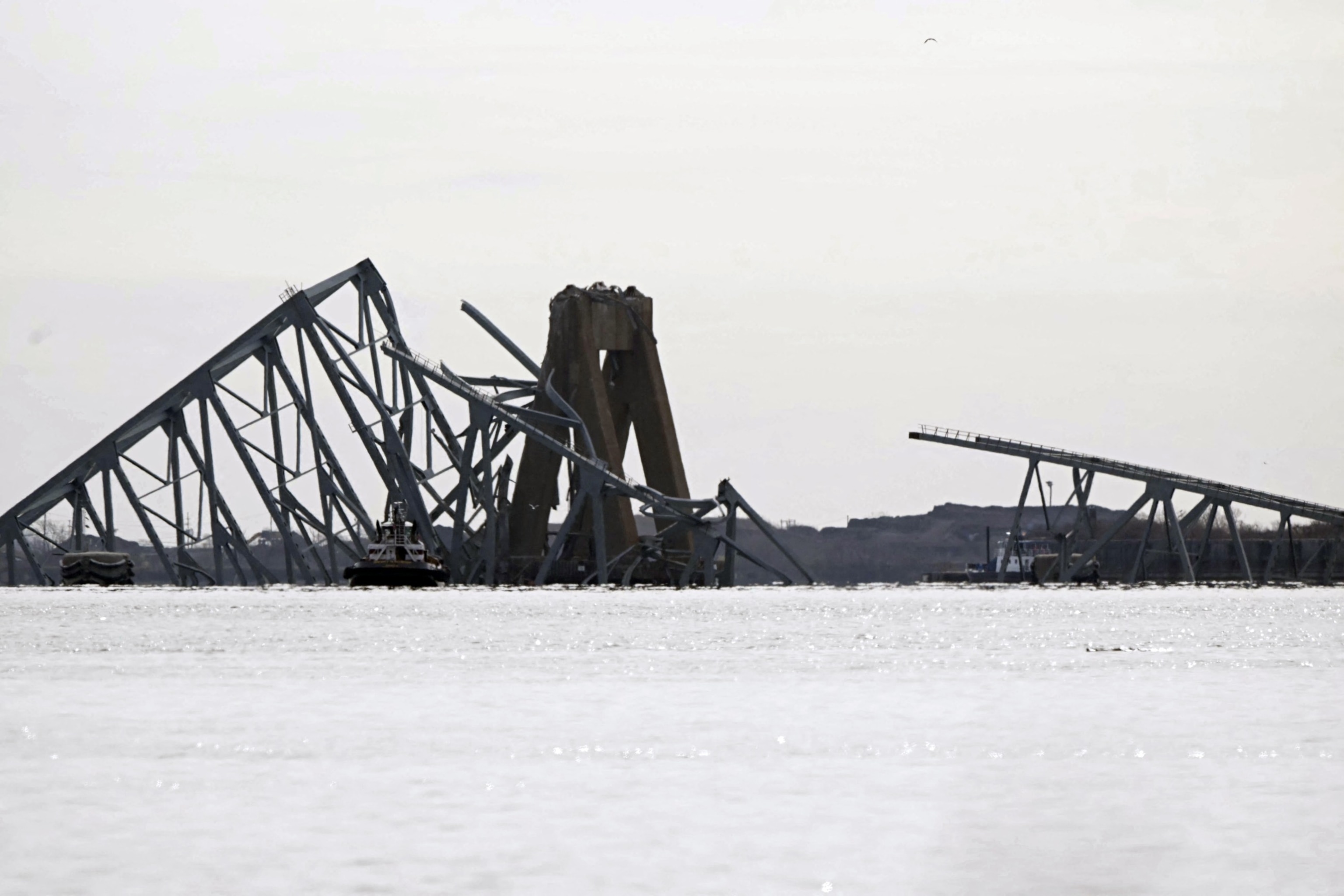Officials were able to stop the flow of traffic onto the Francis Scott Key Bridge in Baltimore before a massive cargo ship crashed into a support column, helping to save lives in the disaster, Maryland Gov. Wes Moore said.
The container ship Dali issued a mayday call as it approached the 1.6-mile-long bridge at about eight knots, a “very rapid speed,” Moore said. Following that notification, officials were able to prevent more cars from going onto the bridge before the collapse, he said.
“These people are heroes,” Moore told reporters during a press briefing on Tuesday. “They saved lives last night.”
After personnel on the ship alerted the Maryland Department of Transportation that they lost control of the vessel, local authorities were able to close the bridge before it was struck, “which undoubtedly saved lives,” President Joe Biden said Tuesday during remarks on the disaster.
A review of traffic cameras by Maryland transportation officials confirmed there were “no vehicles transiting the bridge at the time of the incident,” according to an internal U.S. Department of Homeland Security briefing obtained by ABC News.
The Singapore-flagged vessel struck the bridge at about 1:30 a.m. ET, causing the bridge to partially collapse, officials said. Authorities said several workers who were part of a maintenance team fixing potholes on the span went into the water, along with multiple vehicles.

The steel frame of the Francis Scott Key Bridge lies in the water after it collapsed in Baltimore, March 26, 2024.
Mandel Ngan/AFP via Getty Images
Two workers were rescued while six remain unaccounted for following the collapse, officials said. Authorities were working to determine how many people may have been involved in the collapse, Moore said.
“The thing we do know is that many of the vehicles were stopped before they got onto the bridge, which saved lives in a very, very heroic way,” he said.
A search-and-rescue effort is underway, with divers and emergency personnel combing the area for people believed to have fallen from the collapsing bridge into the frigid water, officials said.
“To the victims of this tragedy and their loved ones, all our hearts are broken,” Moore said. “In the face of heartbreak, we come together, we embrace each other.”

A view of the Dali cargo vessel which crashed into the Francis Scott Key Bridge causing it to collapse in Baltimore, March 26, 2024.
Julia Nikhinson/Reuters
Moore said there was no credible evidence that the crash involved terrorism. He said it appeared to be a tragic accident.
According to a Coast Guard memo obtained by ABC News, a harbor pilot and an assistant aboard the cargo ship reported the power issues that prompted multiple alarms on the bridge of the vessel and loss of propulsion.
The bridge is part of Interstate 695 and crosses the Patapsco River, in Baltimore Harbor.
An estimated 30,000 vehicles crossed the bridge per day, according to the Maryland Transportation Authority.
ABC News’ Josh Margolin and Aaron Katersky contributed to this report.
On the morning of May 15, 2021, officials made a split-second decision that ultimately saved countless lives. Just moments before the Baltimore Key Bridge collapsed, they halted traffic and prevented what could have been a catastrophic disaster.
The collapse of the Baltimore Key Bridge sent shockwaves through the city and left many wondering how such a tragedy could have been averted. The answer lies in the quick thinking and decisive actions of the officials who were on the scene that fateful day.
As reports of structural issues began to surface, officials immediately sprang into action. Recognizing the imminent danger, they made the difficult decision to stop traffic on the bridge and evacuate all nearby residents. Their swift response undoubtedly prevented a potential disaster and ensured the safety of those in harm’s way.
In the aftermath of the collapse, these officials have been hailed as heroes for their bravery and quick thinking. Their actions not only saved lives but also prevented further damage and destruction. Their dedication to public safety and their willingness to put themselves in harm’s way to protect others is truly commendable.
The collapse of the Baltimore Key Bridge serves as a stark reminder of the importance of infrastructure maintenance and the crucial role that officials play in ensuring public safety. It also highlights the need for continued investment in our nation’s bridges and roads to prevent future tragedies.
As we reflect on this harrowing event, let us not forget the heroes who acted swiftly and decisively to prevent a potential disaster. Their bravery and selflessness serve as a shining example of what it means to serve and protect the public. Let us honor their actions and continue to support those who work tirelessly to keep us safe.



